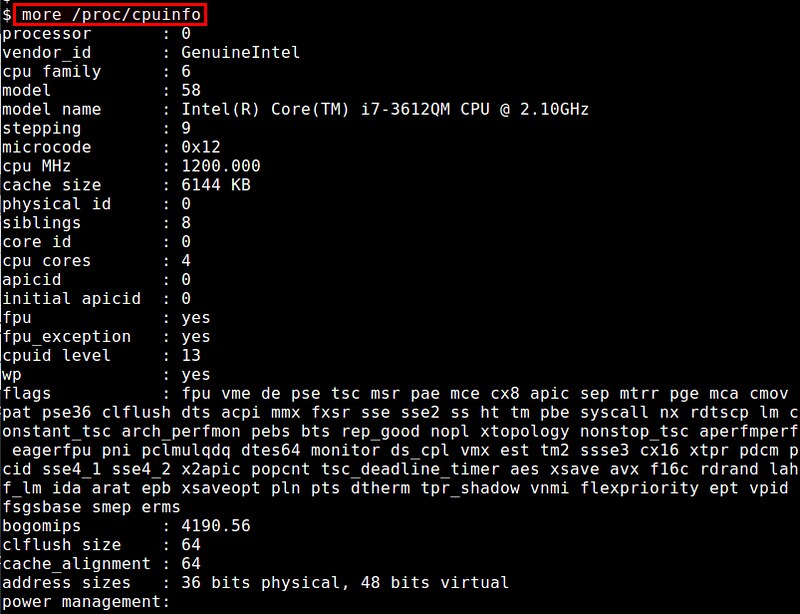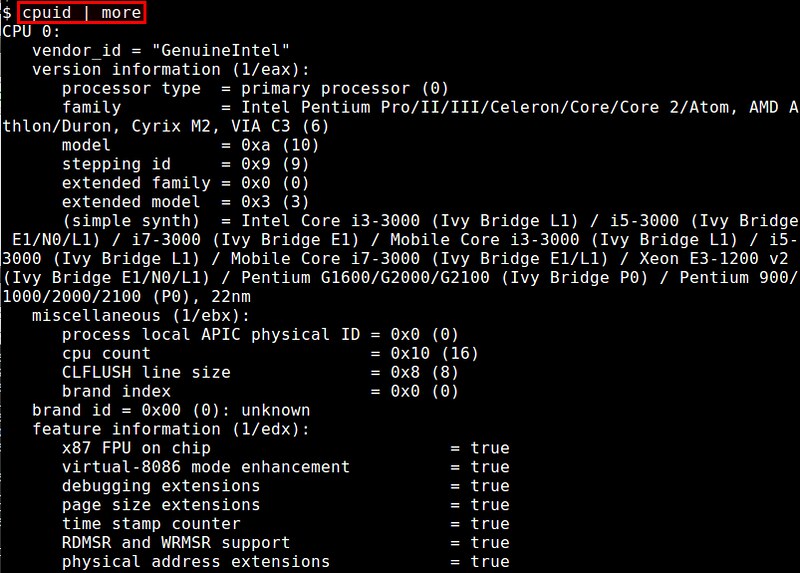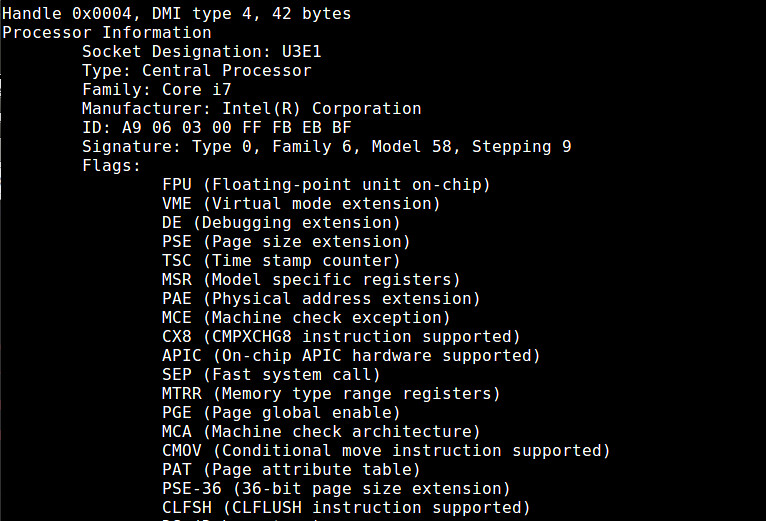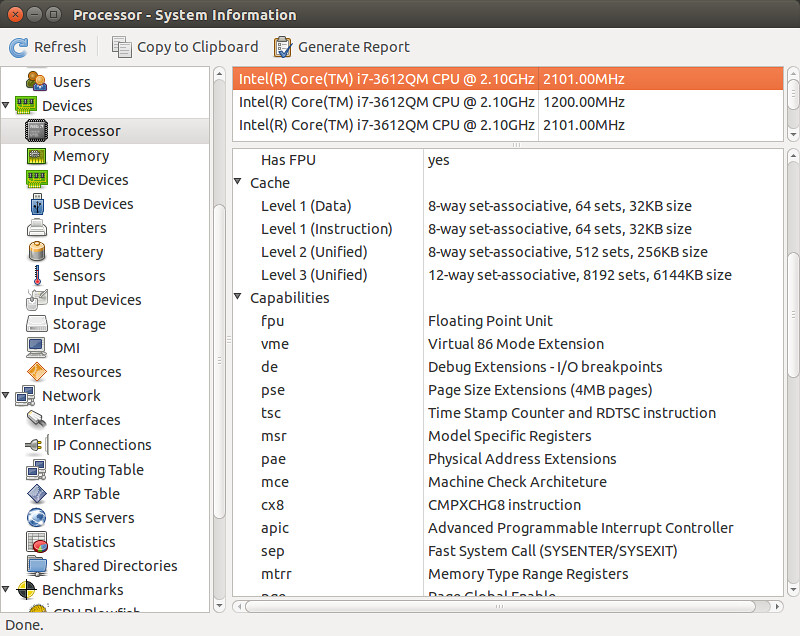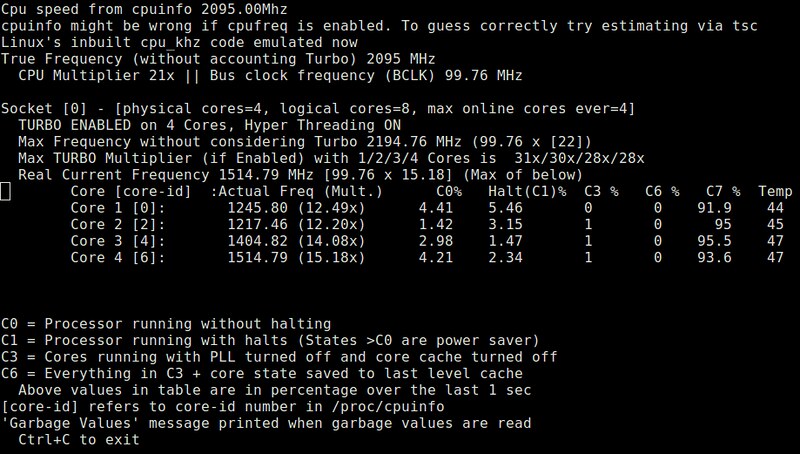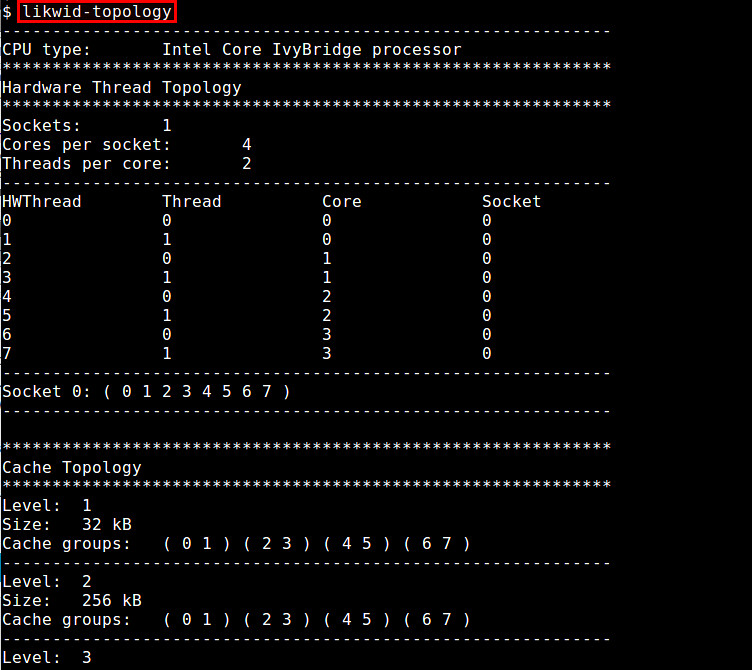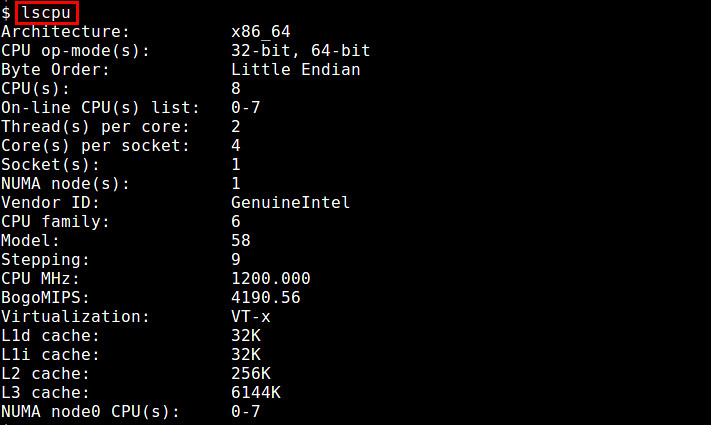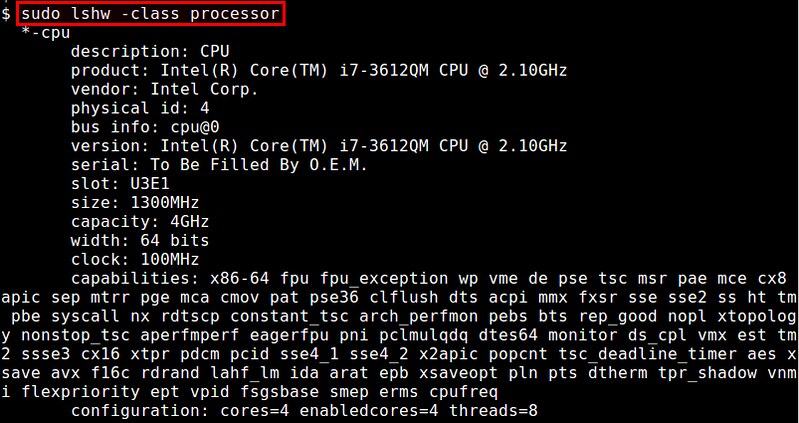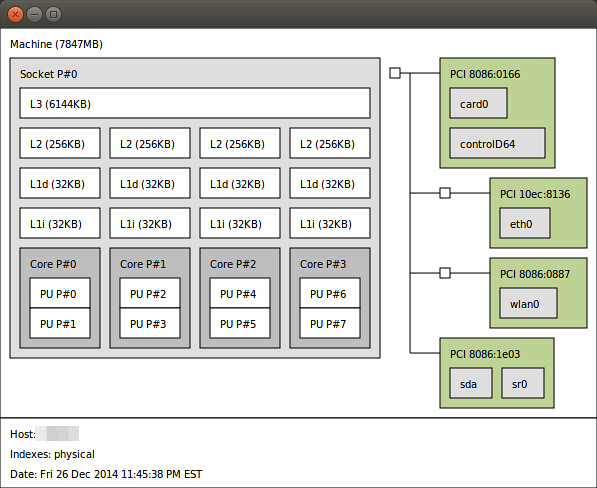5.4 KiB
Linux有问必答时间--如何查看Linux系统的CPU信息
问题: 我想要了解我的电脑关于CPU处理器的详细信息,查看CPU信息比较有效地方法是什么?
根据你的需要,有各种各样的关于你的CPU处理器信息你需要了解,比如CPU供应商名、模型名、时钟频率、套接字/内核的数量, L1/L2/L3缓存配置、可用的处理器能力(比如:硬件虚拟化、AES, MMX, SSE)等等。在Linux中,有许多命令行或基于GUI的工具就能来展示你的CPU硬件的相关具体信息。
1. /proc/cpuinfo
最简单的方法就是查看 /proc/cpuinfo ,这个虚拟文件展示的是可用CPU硬件的配置。
$ more /proc/cpuinfo
通过查看这个文件,你能识别出物理处理器数、每个CPU核心数、可用的CPU标志寄存器以及其它东西的数量。
2. cpufreq-info
cpufreq-info命令(cpufrequtils包的一部分)从内核/硬件中收集并报告CPU频率信息。这条命令展示了CPU当前运行的硬件频率,包括CPU所允许的最小/最大频率、CPUfreq策略/统计数据等等。来看下CPU #0上的信息:
$ cpufreq-info -c 0
3. cpuid
cpuid命令的功能就相当于一个专用的CPU信息工具,它能通过使用CPUID功能来显示详细的关于CPU硬件的信息。信息报告包括处理器类型/家族、CPU扩展指令集、缓存/TLB(译者注:传输后备缓冲器)配置、电源管理功能等等。
$ cpuid
4. dmidecode
dmidecode命令直接从BIOS的DMI(译者注:桌面管理接口)数据收集关于系统硬件的具体信息。CPU信息报告包括CPU供应商、版本、CPU标志寄存器、最大/最近的时钟速度、(所允许的)核心总数、L1/L2/L3缓存配置等等。
$ sudo dmidecode
5. hardinfo
hardinfo是一个基于GUI的系统信息工具,它能展示给你一个易于理解的CPU硬件信息的概况,也包括你的系统其它的一些硬件组成部分。
$ hardinfo
6. i7z
i7z是一个专供英特尔酷睿i3、i5和i7 CPU的实时CPU报告工具。它能实时显示每个核心的各类信息,比如睿频加速状态、CPU频率、CPU电源状态、温度检测等等。i7z运行在基于ncurses的控制台模式或基于QT的GUI的其中之一上。
$ sudo i7z
8. likwid-topology
likwid (Like I Knew What I'm Doing) 是一个用来测量、配置并显示硬件相关特性的命令行收集工具。其中的likwid拓扑结构能显示CPU硬件(线程/缓存/NUMA)的拓扑结构信息,还能识别处理器家族(比如:Intel Core 2, AMD Shanghai)。
9. lscpu
The lscpu command summarizes /etc/cpuinfo content in a more user-friendly format, e.g., the number of (online/offline) CPUs, cores, sockets, NUMA nodes.
$ lscpu
10. lshw
The lshw command is a comprehensive hardware query tool. Unlike other tools, lshw requires root privilege because it query DMI information in system BIOS. It can report the total number of cores and enabled cores, but miss out on information such as L1/L2/L3 cache configuration. The GTK version lshw-gtk is also available.
$ sudo lshw -class processor
11. lstopo
The lstopo command (contained in hwloc package) visualizes the topology of the system which is composed of CPUs, cache, memory and I/O devices. This command is useful to identify the processor architecture and NUMA topology of the system.
$ lstopo
12. numactl
Originally developed to set the NUMA scheduling and memeory placement policy of Linux processes, the numactl command can also show information about NUMA topology of the CPU hardware from the command line.
$ numactl --hardware
13. x86info
x86info is a command-line tool for showing x86-based CPU information. Reported information includes CPU model, number of threads/cores, clock speed, TLB cache configuration, supported feature flags, etc.
$ x86info --all
